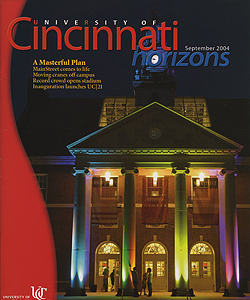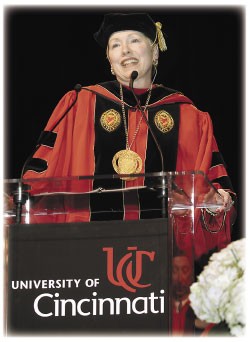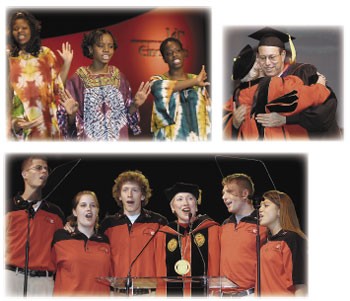by Deborah Rieselman
"Drifting into the future is not an option under this watch," announced Nancy Zimpher at her inauguration as the University of Cincinnati's 25th president on May 21. In fact, when she referred to plans to "propel UC to premier institutional stature," she did not use the word "propel" lightly.

 Past Issues
Past Issues
